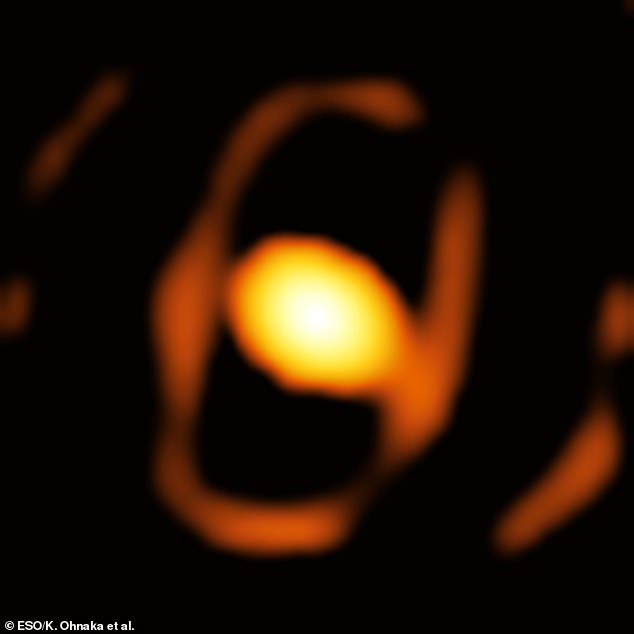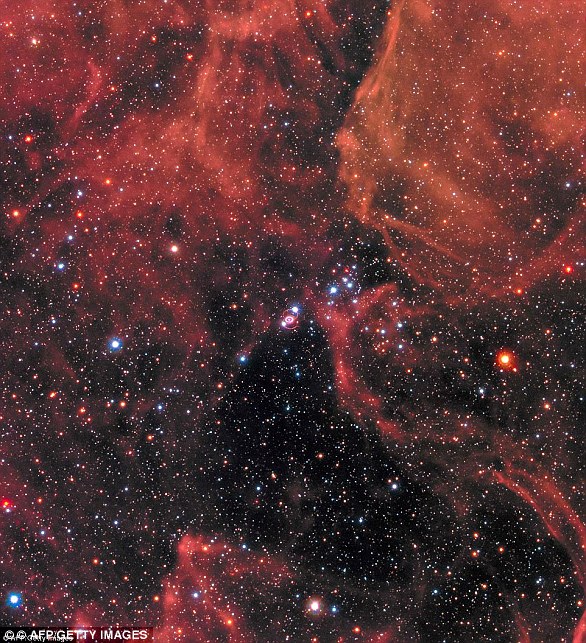Scientists have taken the first close-up image of a star outside our own galaxy, and some fantasy fans may find it surprisingly familiar.
The ‘Behemoth Star’ WOH G64 is located a staggering 160,000 light years from Earth, in a neighboring galaxy called the Large Magellanic Cloud.
Although scientists have known about this star for decades, it has not been until now that technological advances have made it possible to see it up close.
The incredible image reveals a glowing core surrounded by an egg-shaped cocoon of dust and gas that resembles the Eye of Sauron from the Lord of the Rings.
However, scientists say the star’s iris-shaped ring is actually a sign that this red supergiant could be on the brink of collapse.
Researchers found that the dying star has become dimmer over the past 10 years as it sheds its outer layers into space.
Co-author Dr Jacco van Loon, director of Keele Observatory at Keele University, told MailOnline: “Other distant supernova explosions often indicate that the star had shed a large amount of material in the years or decades before the explosion. .
“If this is what WOH G64 is doing right now, there’s a good chance we’ll see it blow up in our lifetime.”
Scientists have taken the first close-up image of a star outside our own galaxy (pictured), capturing this stunning image of the ‘Behemoth Star’ WOH G64.
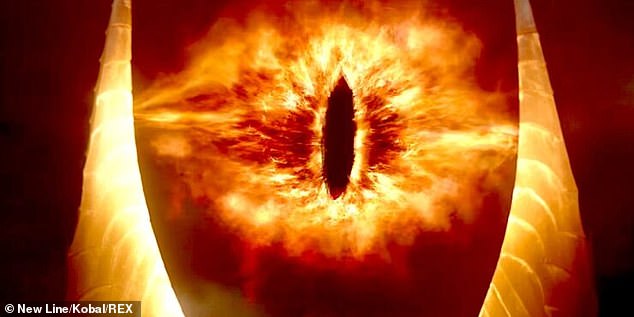
Fantasy fans will notice that the star’s image bears a striking resemblance to the Eye of Saron from The Lord of the Rings.
Although stars are massive, the incredible distances that separate them from Earth make them extremely difficult to image.
Even when it comes to stars within our galaxy, astronomers have only been able to produce images of about two dozen stars like Betelgeuse, the closest red supergiant to the Sun.
Obtaining real images of a star outside the Milky Way and hundreds of thousands of light years from Earth requires the use of a specialized technique called “interferometry.”
This is where multiple telescopes combine their information to act as if they were a single enormous lens as wide as the distance between them.
By combining data from multiple large telescopes, astronomers can obtain previously impossible levels of detail from objects incredibly far from Earth.
Using this technique, the researchers fused images from the European Southern Observatory’s (ESO) Very Large Telescope Interferometer (VLTI) with four 8-meter-wide telescopes.
This finally allowed the researchers to record a close-up image of WOH G64.
Lead author Dr Keiichi Ohnaka, an astronomer at Universidad Andrés Bello in Chile, says: “For the first time, we have managed to take a magnified image of a dying star in a galaxy outside our Milky Way.”
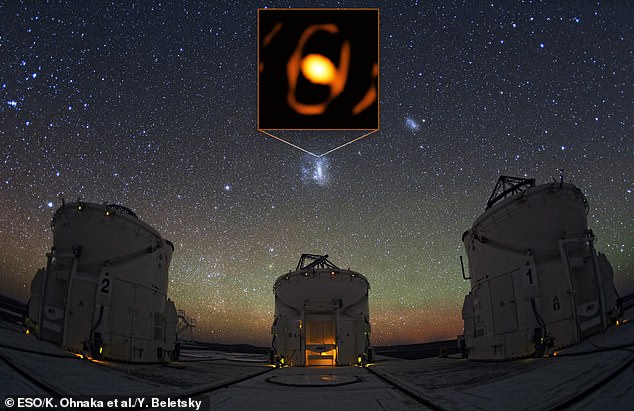
The star WOH G64 is located in a galaxy called the Large Magellanic Cloud, more than 160,000 light years from Earth.
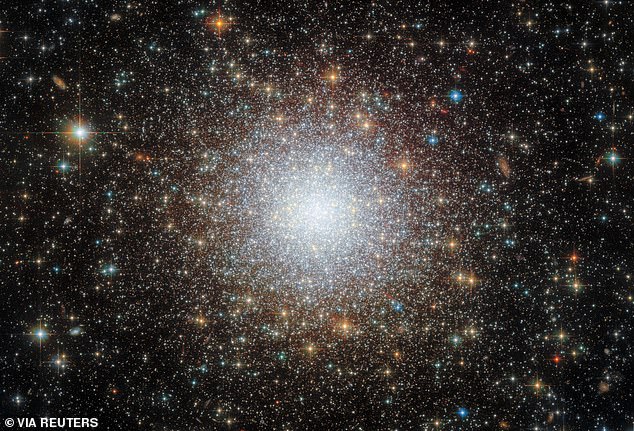
This is the first time a star from a neighboring galaxy, such as the Magellanic Cloud (pictured), has been captured. This technique could allow scientists to observe never-before-recorded processes taking place in dying stars.
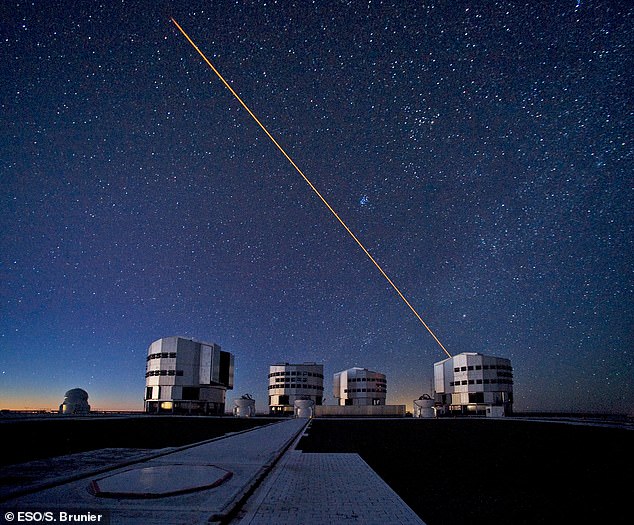
To capture an image of the star it was necessary to use a technique called interferometry to fuse images from the European Southern Observatory’s Very Large Telescope (VLTI) interferometer, four 8-meter-wide telescopes (pictured).
While the researchers say they were mainly trying to prove that these images were possible, they also discovered something unexpected about the Behemoth star.
Dr. Ohnaka says: “We discovered an egg-shaped cocoon that closely surrounds the star.
“We are excited because this may be related to the dramatic ejection of material from the dying star before a supernova explosion.”
When a star uses up the last of its hydrogen fuel, the balance of forces that keeps it stable begins to fail and the star collapses in on itself.
As the outer layers fall inward, the area around the core becomes so hot that it begins to fuse hydrogen atoms into helium.
The immense amounts of energy generated by this process cause the star to inflate into a huge red giant like WOH G64 and expel the outer layers into space.
Compared to observations made in 2005 and 2007, the researchers noted that WOH G64 has become significantly dimmer in the intervening decade.
Researchers believe this dimming and the egg-shaped cocoon could be due to the star having “shed its mantle,” a critical change that had never before been seen while it was occurring.
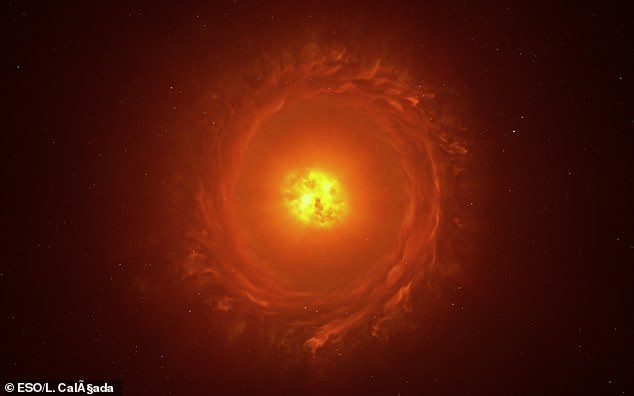
Researchers say the egg-shaped cocoon of dust surrounding the star could be a sign that WOH G64 could explode in a supernova explosion within our lifetimes.
Co-author Professor Gerd Weigelt of the Max Planck Institute for Radio Astronomy says: “We have discovered that the star has been undergoing a significant change over the past 10 years, giving us a rare opportunity to witness the life of a star in reality”. -time.’
While some stars remain red supergiants for tens of thousands of years before exploding, the sudden change suggests there is a chance that WOH G64 could explode relatively soon.
This groundbreaking image is therefore an unprecedented opportunity to observe the final days of a dying star.
Researchers are already planning more observations of the star to find out more about what is happening.
And, as ESO prepares to continue upgrading the VLTI equipment, even better images may soon be on the way.
Dr Loon concludes: “Being able to take the image is a first step in seeing firsthand what happens around some of the rarest types of stars, when they do wild things before they die that are difficult to detect in the act.
“We weren’t expecting to see this star do something really dramatic, and get images that would help us understand the final phases of the lives of massive stars before they explode.”

